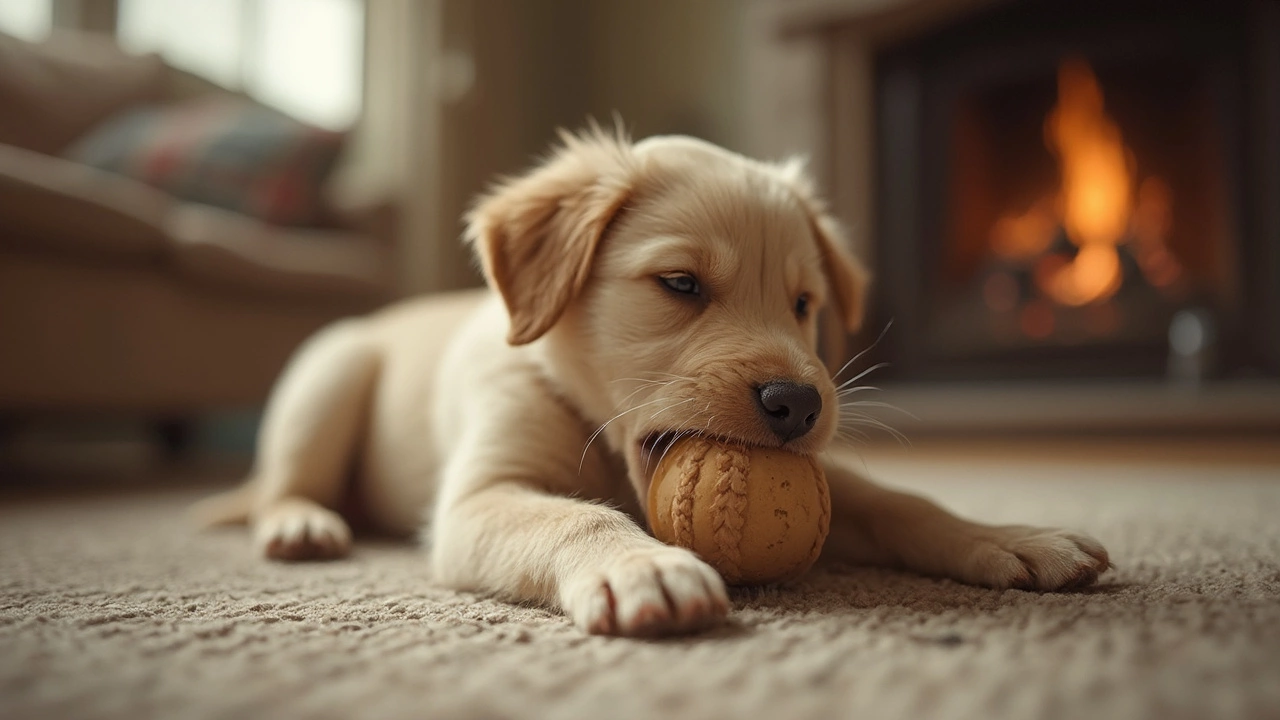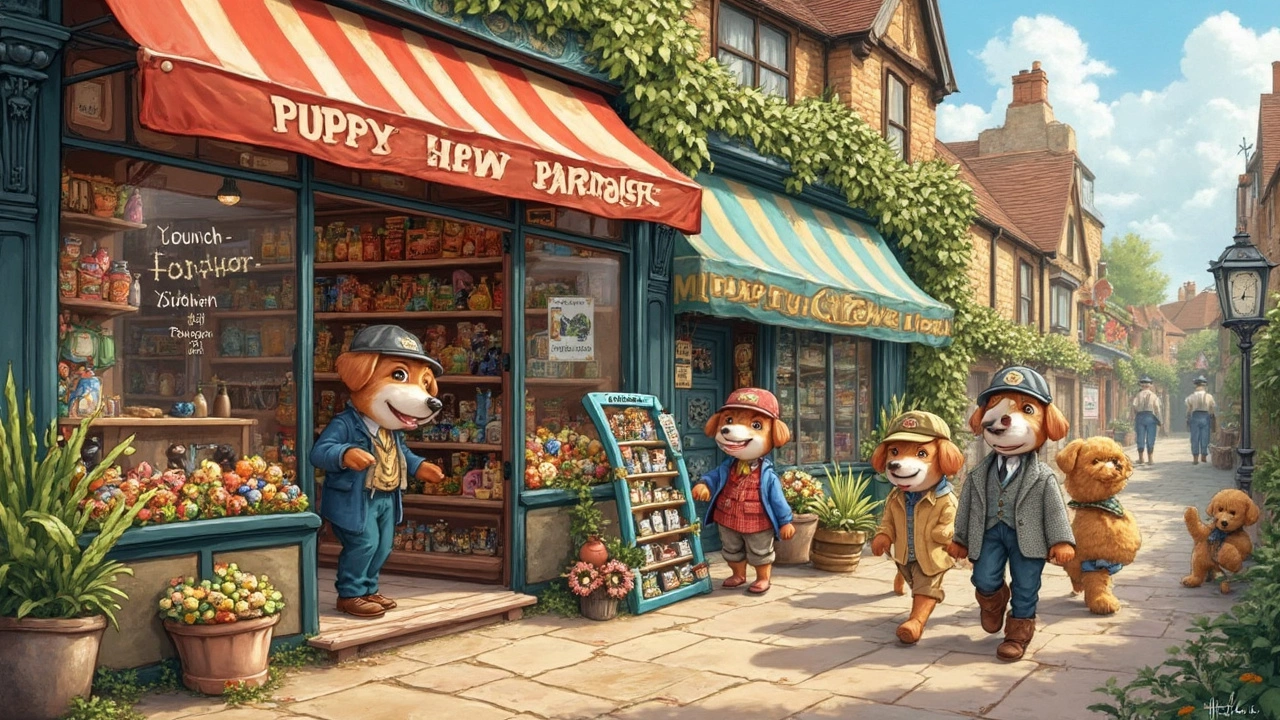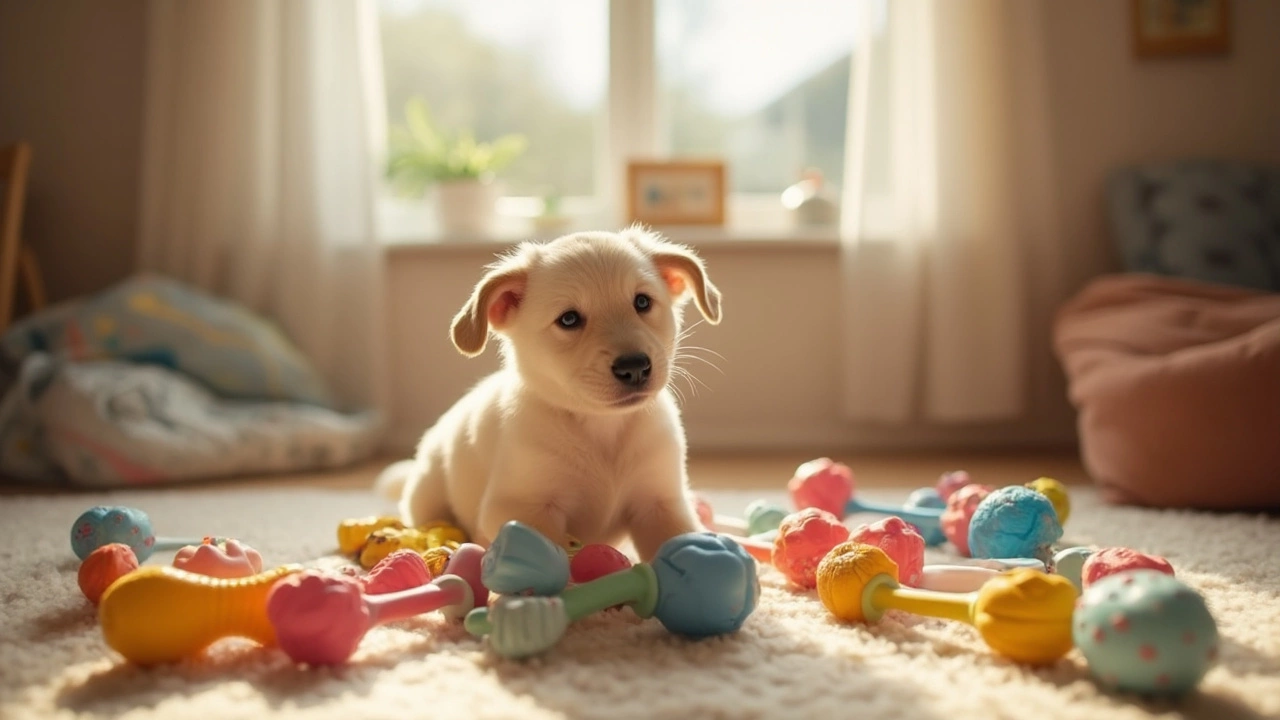Puppies have a knack for chewing on everything in sight, don’t they? It's more than just a quirky habit; it's a way for them to explore the world and soothe those itchy gums. But here’s the catch: not every toy out there is good for their tiny teeth.
When you're picking out a chew toy, you want something that's safe and won't break into bits that might choke your pup. Think about toys made from durable rubber or nylon—like those classic Kong toys. These materials are tough enough to withstand gnawing but soft enough not to harm your puppy's mouth.
And it's not just about the material; size matters too! A toy too small might get swallowed, so always go a size up if you’re unsure. We'll dive into more details on what to avoid and the best choices ahead.
- Why Chewing is Important for Puppies
- Materials to Avoid for Puppy Chew Toys
- Best Safe Chew Toys for Puppies
- DIY Chew Toy Hacks
- Monitoring Your Puppy's Chewing Habits
Why Chewing is Important for Puppies
Ever wonder why your puppy is gnawing on everything, from your sneakers to the TV remote? Chewing is a natural and essential behavior that plays a critical role in a puppy’s development. Understanding why it’s so important can help you make better choices when picking those puppy chew toys.
First, chewing helps alleviate teething discomfort. Puppies, like human babies, go through a teething phase where their gums can be sore and itchy. Chewing on the right materials can provide relief and help those tiny teeth break through.
But it’s not just about teething. Chewing also helps puppies explore their environment. Since they can’t ask questions or google what stuff is, they check things out with their mouths. This exploratory chewing helps them figure out the world around them. It’s kinda like tasting a new dish for us—no cookbook needed.
Additionally, chewing is a fantastic way for puppies to exercise their jaws and keep dental issues at bay. Regular chewing helps scrape away plaque and tartar, promoting good dental health. A healthier mouth means fewer vet visits, which is a win for both you and your furry friend.
Puppies also chew as a way to relieve stress and keep boredom at bay. It’s a bit like how we might go for a run or watch a movie to unwind. Providing safe and stimulating chew toys can help redirect this energy positively, preventing them from targeting your favorite shoes.
So, next time your pup gleefully destroys a carrot-shaped toy, know it’s part of their development process. Make sure to have a stash of safe puppy toys ready. Let them chew away, knowing it's helping them grow into a happy, healthy adult dog.
Materials to Avoid for Puppy Chew Toys
Alright, so we all know puppies chew like there's no tomorrow, but not everything they put in their mouths is safe. When you're out picking chew toys, keep your eyes peeled for materials that scream danger.
First off, those cheap plastic toys? A big no-no. They tend to break easily and pose a huge risk since small pieces, or worse, sharp shards, might end up being swallowed by your pup. Stick to tougher, more durable options. “Plastics can sometimes contain harmful chemicals,” says Dr. Sarah Ellis, a well-known vet specializing in canine health,
“and it’s better to err on the side of caution with your pooch’s playthings.”
Next, be wary of soft or plush toys with stuffing. They might look cuddly, but if torn, the stuffing can become a choking hazard. And don't even get me started on those squeakers; if your pup gets to them, they’ll chew it like candy!
- Rawhide: Once a popular choice, rawhide can swell once it gets inside a dog's stomach, leading to digestive issues or choking if it gets caught in their throat.
- Vinyl and Latex: These materials can often be too soft and easy to tear apart, which is not good news for those razor-sharp puppy teeth.
- Rope Toys: While some dogs love them, they can quickly become unraveled. The strings can cause blockages if swallowed.
Keeping your puppy safe is all about being picky about what ends up in their toy basket. Make sure you're picking safe puppy toys that can handle all the chewing and tugging.

Best Safe Chew Toys for Puppies
When it comes to choosing the best safe chew toys for puppies, it’s all about balance: durability, safety, and fun. You want something that'll last but is gentle enough on those little gums. Let's break down some top choices:
- Rubber Toys: Kong toys are legendary in the puppy world. Their tough, yet puppy-friendly rubber makes them perfect for chewing. You can even stuff them with treats for added fun!
- Nylon Bones: Brands like Nylabone offer durable bones that withstand even the sharpest puppy teeth. Make sure to choose the versions made specifically for puppies, as these are softer than the adult ones.
- Rope Toys: Puppies love a good tug-of-war, and rope toys can satisfy their chewing instinct too. Opt for high-quality, tightly woven ropes to avoid any loose threads that might be swallowed.
- Soft Plush Toys: While they might not last forever, plush toys are great for snuggles and light chewing. Look for ones with reinforced stitching and no small parts like buttons or beads.
While shopping for toys, it's key to consider your puppy's size and chewing strength. A toy that's a perfect fit now may become a choking hazard as your pup grows, so be ready to switch them up!
A quick tip: rotating toys keeps things exciting and reduces the risk of your pup getting bored and chewing on your shoes instead. Puppies are a bundle of energy and curiosity, after all!
To give you a sense of how these options stack up, here's a little breakdown of their durability:
| Toy Type | Durability | Average Lifespan |
|---|---|---|
| Rubber Toys | High | 6-12 months |
| Nylon Bones | Medium to High | 6-9 months |
| Rope Toys | Medium | 3-6 months |
| Soft Plush Toys | Low to Medium | 1-3 months |
DIY Chew Toy Hacks
Want to save a few bucks and keep your pup entertained safely? Making your own puppy chew toys can be a fun project and a great way to reuse materials around the house.
First off, let's talk about an easy and eco-friendly option: a water bottle toy. Grab an empty plastic water bottle (caps removed, of course) and stuff it inside an old sock. Tie a knot at the open end of the sock to secure it. The crinkly sound of the bottle will keep your puppy engaged, and it's a safe, replaceable option when it gets too chewed up.
For something a bit softer, consider creating a braided fabric toy. Use old t-shirts or towels that you were just going to toss out. Cut them into strips and braid them tightly together. Knot both ends, and voilà, you have a chewy toy that's gentle on their gums.
If your puppy loves a bit of flavor, try freezing a mix of water and peanut butter in an ice cube tray for a cool treat during hot days. Make sure the peanut butter is xylitol-free, as this sweetener is harmful to dogs.
Here's a stat that might surprise you: over 60% of dog owners have attempted making their own puppy toys at least once, and many continue because it's both cost-effective and personalized to their pet's preferences.
Remember, always supervise your pup with homemade toys to ensure they don't break apart in a dangerous way.

Monitoring Your Puppy's Chewing Habits
Keeping an eye on your pup’s chewing habits can make a world of difference in ensuring they stay safe and happy. Much like kids exploring the world, puppies use their mouths, so it’s essential to watch what they're munching on. But how do you keep tabs without turning into a full-time chew detective?
Start by noting your pup's chew toy safety preferences. If your puppy is particularly attached to one toy, examine it regularly for signs of wear and tear. Toys made from durable materials can still break over time, leading to potential hazards.
“Puppies explore their world through chewing, and ensuring they do so safely is key to their development,” says Dr. Emily Green, a noted veterinarian specializing in canine behavior.
It’s not just about what they chew—it's for how long. If your puppy is obsessed with a certain toy for extended periods, ensure the toy isn't causing excessive wear on their teeth. Too much chewing can lead to dental issues down the line.
Here’s a quick checklist to help you monitor effectively:
- Inspect toys daily for damage. A small rip can quickly become a choking hazard.
- Rotate toys. This keeps playtime exciting and prevents them from getting stuck on one object.
- Use puppy-safe deterrents if they start gnawing on furniture or cables.
- Maintain size-appropriate toys. If they’ve outgrown a favorite, it’s time to upgrade!
According to a survey by the American Pet Products Association, 60% of dog owners replace toys every few months. This not only keeps things fresh but also ensures they aren't playing with something that's worn out and potentially dangerous.
Remember, staying proactive and attentive could save you and your puppy from an unnecessary trip to the vet. Keep those puppy chew toys safe, and you'll be set for lots of happy playtimes!

